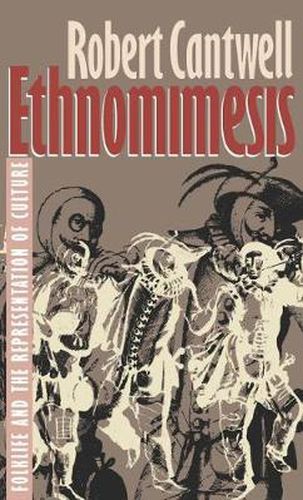Readings Newsletter
Become a Readings Member to make your shopping experience even easier.
Sign in or sign up for free!
You’re not far away from qualifying for FREE standard shipping within Australia
You’ve qualified for FREE standard shipping within Australia
The cart is loading…






Wide-ranging and provocative, this book will fascinate all those intrigued by how we create and perpetuate our representations of folklife and culture. Ethnomimesis is Robert Cantwell’s word for the process by which we take cultural influences, traditions, and practices to ourselves and then manifest them to others. Ethnomimesis is an element of ordinary social communication, but springing out of it, too, is that extraordinary summoning up that produces our literature, our art, and our music. In the broadest sense, ethnomimesis is the representation of culture. Using such diverse cultural artifacts as King Lear and an eighteenth-century English manor garden to deepen our understanding of ethnomimesis, Cantwell then explores at length the representation of culture in our national museum, the Smithsonian, focusing especially on the Festival of American Folklife. Like many other such exhibitions, the Festival enacts presentations of culture across the boundaries of rank and class, race and ethnicity, gender and the life cycle. Like the concept of ‘folklife’ itself, Cantwell argues, the Festival stands where ethnomimesis finds its creative source, at the cultural frontier between self and other. That boundary, and the energy that accumulates there, runs through the many, varied ‘exhibits’ of this book.
$9.00 standard shipping within Australia
FREE standard shipping within Australia for orders over $100.00
Express & International shipping calculated at checkout
Wide-ranging and provocative, this book will fascinate all those intrigued by how we create and perpetuate our representations of folklife and culture. Ethnomimesis is Robert Cantwell’s word for the process by which we take cultural influences, traditions, and practices to ourselves and then manifest them to others. Ethnomimesis is an element of ordinary social communication, but springing out of it, too, is that extraordinary summoning up that produces our literature, our art, and our music. In the broadest sense, ethnomimesis is the representation of culture. Using such diverse cultural artifacts as King Lear and an eighteenth-century English manor garden to deepen our understanding of ethnomimesis, Cantwell then explores at length the representation of culture in our national museum, the Smithsonian, focusing especially on the Festival of American Folklife. Like many other such exhibitions, the Festival enacts presentations of culture across the boundaries of rank and class, race and ethnicity, gender and the life cycle. Like the concept of ‘folklife’ itself, Cantwell argues, the Festival stands where ethnomimesis finds its creative source, at the cultural frontier between self and other. That boundary, and the energy that accumulates there, runs through the many, varied ‘exhibits’ of this book.